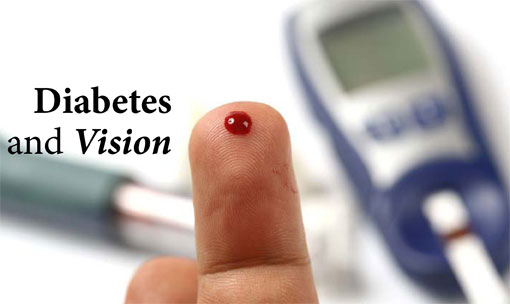By Netan Choudhry, MD, and Jennifer George
 The Canadian Diabetes Association estimates that almost nine million Canadians are currently living with diabetes or a precursor of the disease. Worldwide, three people are diagnosed with diabetes every 10 seconds.
The Canadian Diabetes Association estimates that almost nine million Canadians are currently living with diabetes or a precursor of the disease. Worldwide, three people are diagnosed with diabetes every 10 seconds.
Today, the leading cause of diabetes is excessive weight gain, making it one of the most preventable pandemics in the world. While the disease affects all of the body’s organs, the eyes remain its primary targets. Diabetic retinopathy is the leading cause of blindness among people 35-60 years of age. In 2008, it was estimated that approximately two million Canadians suffer from diabetic retinopathy, nearly all of whom will develop some form of diabetic eye disease.
Diabetes is caused by elevated blood sugar levels in the body, which damage the walls of the blood vessels. Diabetics are prone to developing eye and kidney diseases because these organs harbour the smallest blood vessels. Once damaged, the eyes experience poor blood flow and the contents of these blood vessels (blood and fats) gradually leak into the retina.
The retina is a very thin layer of nerve tissue located in the back of the eyes. Its function is similar to the film inside a camera, capturing images and sending them to the brain through the optic nerve, which serves as the battery in the camera. The gradual leakage of the retinal blood vessels results in the swelling of the retina, causing blurred vision. This poor flow of blood to both the retina and surrounding portions of the eye results in gradual ischemia, or death of the retinal (nerve) tissue, and the development of new abnormal blood vessels. The resulting abnormal blood vessels are fragile and bleed into the eye causing decreased vision loss, scarring and finally, blindness.
The treatment for diabetic retinopathy will vary based on the stage of the disease. In the absence of retinal swelling and abnormal blood vessel growth, the only required treatment is the strict management of one’s blood sugar. However, in the presence of swelling and abnormal blood vessel growth, a combination of medicine delivered into the eye and laser treatment is most effective. If the development of scar tissue occurs, resulting in the detachment of the retina, surgery is the only option.
Diabetic retinopathy may not produce symptoms of vision loss immediately; however, an examination may detect small hemorrhages in the retina. Early detection is key in preventing the progression of this disease. The best way to prevent diabetic eye disease is to strictly control blood sugar and involves both a healthy diabetic diet and exercise. With the help of a family doctor or endocrinologist (diabetes specialist), the patient can set goals for blood sugar, weight, cholesterol and blood pressure, and develop a healthy exercise regimen, all of which are key to preventing the complications of diabetes.
Additionally, all diabetics should have a retinal exam, which involves having the eyes dilated. Type I diabetics should schedule a retinal exam within five years of being diagnosed, while Type II diabetics should have an eye exam upon diagnosis of diabetes, continuing with yearly checkups thereafter. Retinopathy can progress quickly during pregnancy, so pregnant women with diabetes should schedule an appointment with their eyecare providers in the first trimester.
The management of diabetes starts with diet, exercise and routine follow-up with doctors. In general, a heart healthy diet is also good for the eyes. Controlling blood pressure and cholesterol, alongside blood sugar, will ensure that the patient’s eyes continue to see their best.







